Overview
The DS2151, DS2152, DS21352, DS21552 and DS2155 single-chip transceivers incorporate all the key performance indications that are required by ANSI T1.231-1997 (originally dated 1993), entitled "Digital Hierarchy–Layer 1 In-Service Digital Transmission Performance Monitoring."Table 1 lists all important parameters and where they are located within the DS2151, DS2152, DS21352, DS21552, and DS2155. These T1 transceivers do the raw collection of the data. The devices rely on the external host to accumulate the parameters and create the higher order statistics such as errored seconds, severely errored seconds, LOS seconds, and so on. The one-second timer within these T1 transceivers is ideal for timing these higher order statistics.
Table 1. DS2151 and DS2152 Parameters
| Parameter | Paragraph | Location Within the DS2151 and DS2152 |
| Bipolar Violations BPV) | 6.1.1.1.1 | Line Code Violation Count Registers with RCR1.7 = 0 |
| Excessive Zeros (EXZ) (See Note 1) | 6.1.1.1.2 | Line Code Violation Count Registers with RCR1.7 = 1 |
| Cyclic Redundancy Check (CRC) | 6.1.1.2.1 | Path Code Violation Count Registers |
| Frame Bit Error (FE) (See Note 2) | 6.1.1.2.2 |
|
| Controlled Slip (CS) | 6.1.1.2.3 | SR1.4 on receive side RIR2.3 on transmit side |
| Loss of Signal (LOS) | 6.1.2.1.1 | SR1.1 |
| SR1.1 | 6.1.2.2.1 | SR1.0 (RCR1.4 and RCR1.5 are used to set the criteria.) |
| Severely Errored Frame (SEF) (See Note 3) | 6.1.2.2.2 | RIR1.2 |
| Alarm Indication Signal (AIS) | 6.1.2.2.3 | SR1.3 |
Note 1: The DS2151 and DS2152 only count each excessive zero string once. For example, a string of 48 consecutive zeros would only increment the line code violation count registers once, not multiple times.
Note 2: Via the RCR2.1 bit, the user has the choice in the D4 framing mode of counting errors in just the Ft-bit pattern or in both the Ft-bit and the Fs-bit patterns.
Note 3: In the D4 framing mode, the SEFE bit (RIR1.2) only counts errors in the Ft-bit pattern; in the ESF framing mode, only errors in the FPS pattern are counted.
Table 2. DS21352 and DS21552 Parameters
| Parameter | Paragraph | Location Within the DS21352 and DS21552 |
| Bipolar Violations (BPV) (See Note 1) | 6.1.1.1.1 | Line Code Violation Count Registers with RCR1.7 = 0 |
| Excessive Zeros (EXZ) (See Note 1) | 6.1.1.1.2 | Line Code Violation Count Registers with RCR1.7 = 1 |
| Cyclic Redundancy Check (CRC) | 6.1.1.2.1 | Path Code Violation Count Registers (Upper nibble of the PCVCR1 register is used for MOSCR1) |
| Frame Bit Error (FE) (See Note 2) | 6.1.1.2.2 |
|
| Controlled Slip (CS) | 6.1.1.2.3 | SR1.4 on receive side RIR2.3 on transmit side |
| Loss of Signal (LOS) | 6.1.2.1.1 | SR1.1 |
| Out of Frame (OOF) | 6.1.2.2.1 | SR1.0 (RCR1.4 and RCR1.5 are used to set the criteria) |
| Severely Errored Frame (SEF) (See Note 3) | 6.1.2.2.2 | RIR1.2 |
| Alarm Indication Signal (AIS) | 6.1.2.2.3 | SR1.3 |
Note 1: Table 3 shows the counting arrangements for the Line Code Violation Count Registers on the DS21352 and the DS21552.
Note 2: Via the RCR2.1 bit, the user has the choice in the D4 framing mode of counting errors in just the Ft bit pattern or in both the Ft and Fs bit patterns.
Note 3: In the D4 framing mode, the SEFE bit (RIR1.2) only counts errors in the Ft pattern; in the ESF framing mode, only errors in the FPS pattern are counted.
Table 3. Counting Arrangements for Line Code Violation Registers
| Count Excessive Zeros (RCR1.7) | B8ZS Enabled (CCR2.2) | What Is Counted in the LCVCRs |
| No | No | BPV |
| Yes | No | BPVs + 16 Consecutive Zeros |
| No | Yes | BPVs (B8ZS Codewords Not Counted) |
| Yes | Yes | BPVs + 8 Consecutive Zeros |
Table 4. DS2155 Parameters
| Parameter | Paragraph | Location Within the DS2155 |
| Bipolar Violations (BPV) (See Note 1) | 6.1.1.1.1 | Line Code Violation Count Registers with ERCNT.0 = 0 |
| Excessive Zeros (EXZ) (See Note 1) | 6.1.1.1.2 | Line Code Violation Count Registers with ERCNT.0 = 1 |
| Cyclic Redundancy Check (CRC) (See Note 2) | 6.1.1.2.1 | Path Code Violation Count Registers (PCVCRF bit is used with MOSCRF bit) |
| Frame Bit Error (FE) (See Note 3) | 6.1.1.2.2 |
|
| Controlled Slip (CS) | 6.1.1.2.3 | SR5.0 on receive side SR5.3 on transmit side |
| Loss of Signal (LOS) | 6.1.2.1.1 | SR2.0 |
| Out of Frame (OOF) (See Note 4) | 6.1.2.2.1 | SR1.3 (T1RCR1.4 (OOF2) and T1RCR1.5 (OOF1) are used to set the criteria) |
| Severely Errored Frame (SEF) (See Note 5) | 6.1.2.2.2 | INFO1.2 |
| Alarm Indication Signal (AIS) | 6.1.2.2.3 | SR2.2 |
Note 1: Table 5 shows the the counting arrangements for the Line Code Violation Count Registers on the DS2155.
Note 2: Table 6 shows the detailed description of exactly what errors the PCVCR counts on the DS2155.
Note 3: Via the ERCNT.2 bit, the user has the choice in the D4 framing mode of counting errors in just the Ft bit pattern or in both the Ft and the Fs bit patterns.
Note 4: Table 7 contains the out-of-frame selection criteria.
Note 5: In the D4 framing mode, the SEFE bit (INFO1.2) only counts errors in the Ft pattern; in the ESF framing mode, only errors in the FPS pattern are counted.
Table 5. LCVCR Register in DS2155
| Count Excessive Zeros (ERCNT.0) | B8ZS Enabled (T1RCR2.5) | What Is Counted in the LCVCRs |
| No | No | BPV |
| Yes | No | BPVs + 16 Consecutive Zeros |
| No | Yes | BPVs (B8ZS Codewords Not Counted) |
| Yes | Yes | BPVs + 8 Consecutive Zeros |
Table 6. T1 Path Code Violation Counting Arrangements Using PCVCR Register in DS2155
| Framing Mode | Count Fs Errors? | What Is Counted in the PCVCRs |
| D4 | No | Errors in the Ft Pattern |
| D4 | Yes | Errors in Both the Ft and Fs Patterns |
| ESF | Don't Care | Errors in the CRC6 Codewords |
Table 7. Out-of-Frame Criteria Selection in DS2155
| OOF2 | OOF1 | Out-Of-Frame Criteria |
| 0 | 0 | 2/4 Frame Bits in Error |
| 0 | 1 | 2/5 Frame Bits in Error |
| 1 | 0 | 2/6 Frame Bits in Error |
| 1 | 1 | 2/6 Frame Bits in Error |
 電子發(fā)燒友App
電子發(fā)燒友App










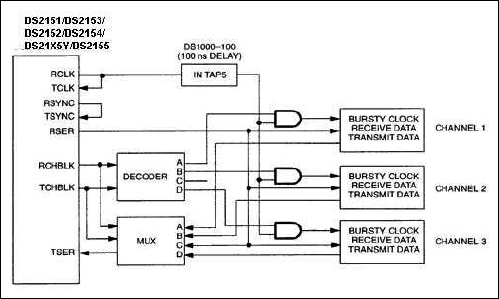

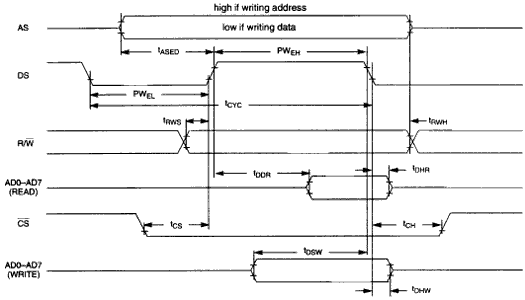
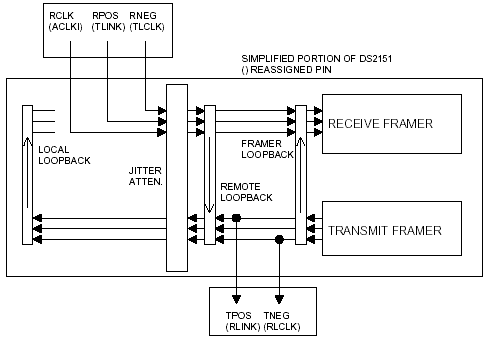



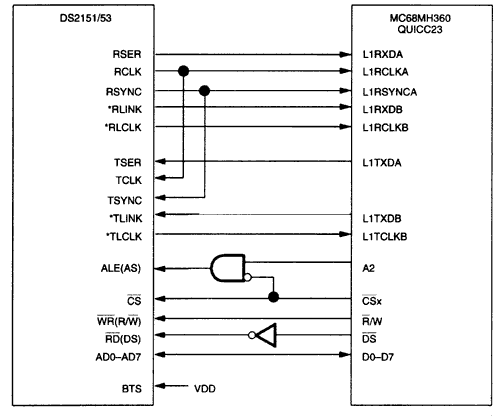


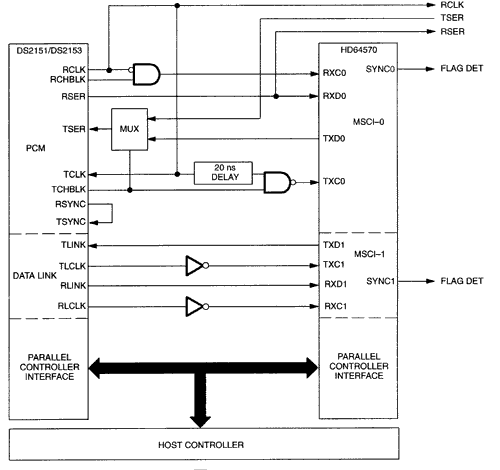
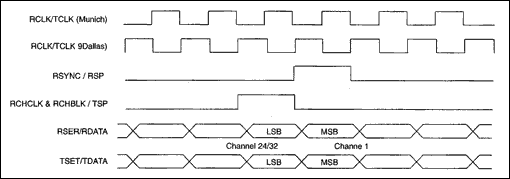
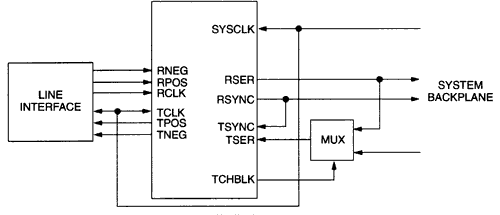

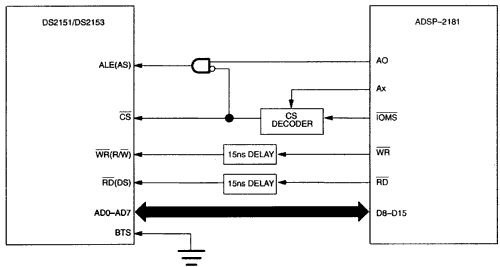


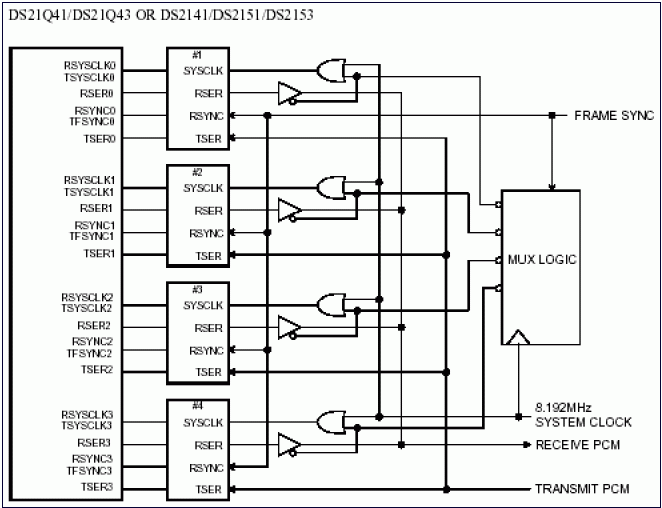
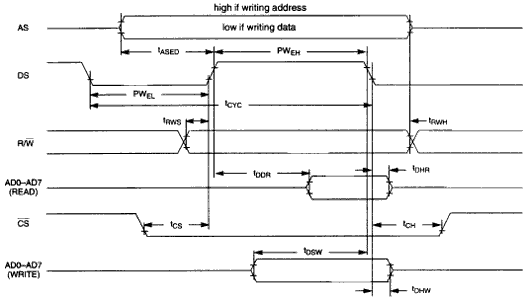




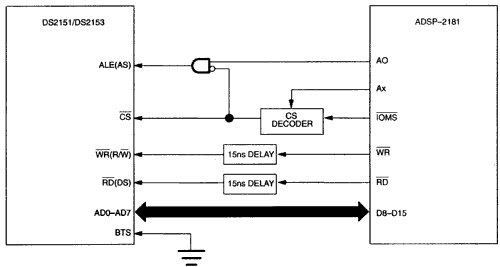
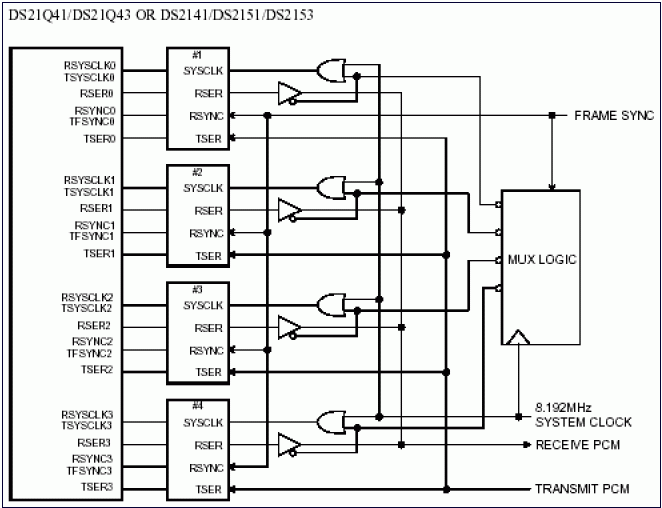















評論